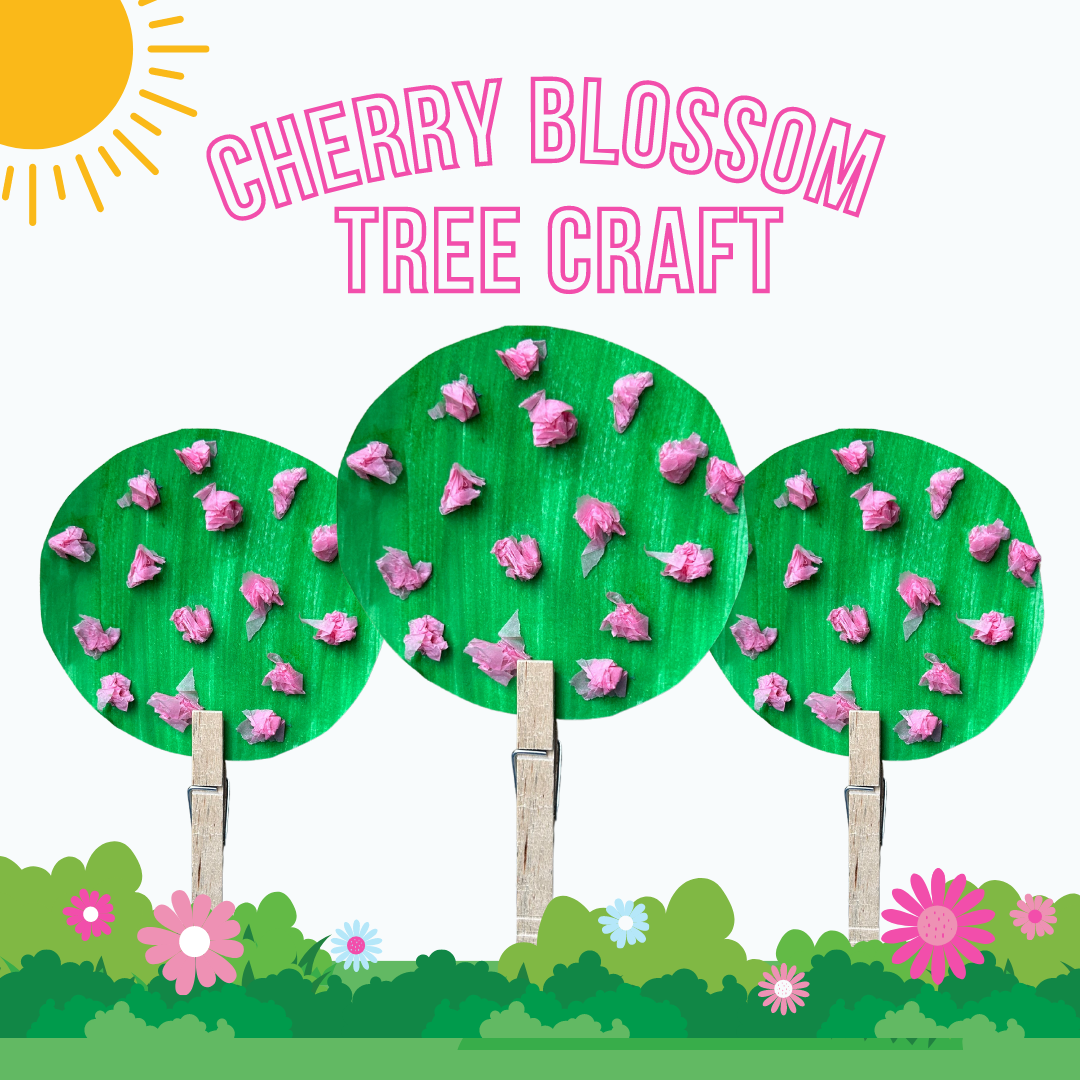The cherry blossoms have bloomed in Northern Virginia! To celebrate the arrival of Spring, we are featuring a cherry blossom craft to work on speech and language skills.
We LOVE using crafts in speech therapy! Crafts are a wonderful way to learn new things and create memories together. They are often incorporated into early childhood education, as crafts are a wonderful way to target language comprehension (i.e. understanding basic concepts or following directions), expressive language (i.e. answering questions or descriptive vocabulary), speech production skills, visual processing skills and fine motor abilities.
This craft covers all of the above! Your child can work on following directions, describing Spring themed vocabulary, and answering questions - all while creating something adorable! Bonus, this craft incorporates tons of fine motor targets, like bilateral coordination for tracing, hand strengthening when tearing paper, and grasp and precision skills when gluing. Not only are these trees fun to make, but they also serve as an excellent way to target these learning concepts.
Items Needed:
Green construction paper
Clothespins
A circle shape of something to trace (such as a peanut butter lid!)
Pencil
Pink tissue paper
Glue
Scissors
First, trace a circle onto the green construction paper. Cut out the circle.
Begin to tear off small pieces of tissue paper. Then, roll the small pieces of tissue paper into balls. These will make the cherry blossoms!
Next, glue the tissue paper to the green circle. Add as many blossoms as you’d like.
Finally, pinch the clothespin around the green circle. The clothespin will be the trunk of the cherry blossom tree.
Enjoy and use as a Spring decoration around your house!
Speech and Language Targets
Video Speech Skills
If your child is a reader and working on a speech sound (like “r”!), print out the list of items and directions needed for the craft. Have your child highlight any of their target sounds they see. Then, use an iPad or phone to record your child as they read the list aloud. Once they are finished, watch the video back with your child to see how they did with their sound!
Descriptive Language
Use the strategy of descriptive talk to model expressive language skills for your child. This means, when you are using an item in the craft, talk about it! Describe what you see, feel or hear. For example, you can model “the glue is sticky!” or “the tissue paper is soft!”
Sequencing
As you make the craft with your child, take pictures of each step. Once the craft is complete, print the pictures and have your child sequence the pictures in the correct order. Encourage them to describe each step! To make this skill more challenging, remove the pictures and have your child describe the steps without the visual cues.
Shape Work
A circle shape is used for the top of the tree, but your little one might not know what a circle is. Create a hands-on experience by searching for circles around your house, such as lids, mugs, toys, and more! If your child understands different shapes, have them sort household items into piles, such as items that are square shapes vs. items that are circle shapes.
Foster creativity
Follow the above steps to create a sample cherry blossom tree. Then, for the next tree craft, encourage your child to get creative! Swap out the green construction paper for plain white and allow your child to decorate their tree with whatever colors or designs they would like. Another option for creativity could be to change the pink tissue paper, such as red tissue paper, to make apples for the tree. Once your child is finished making a tree of their choice, have them describe the similarities and differences between their tree and the original cherry blossom tree.
The speech and language skills for crafts are endless! Be sure to follow us on instagram at @owlstherapy and subscribe to our monthly newsletter for our next craft activity!
Happy Spring!
About the Author
Janene Besch
Director/Speech-Language Pathologist
Janene Besch, née Martin, holds a Master's degree in Speech Language and Hearing Sciences from San Diego State University and a Bachelor's degree in Psychology from the University of California at San Diego. Janene is a member of the American Academy of Private Practice in Speech Pathology
Read more >














Welcome back to our last post in the series “Milestones: Navigating the Numbers”! This series was inspired by the updated American Speech-Language-Hearing Association’s (ASHA) Developmental Milestones. Read more on the expected speech, language, social-pragmatic, and feeding milestones expected by age 1, age 2, age 3 and age 4.